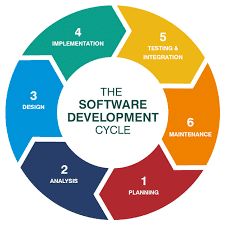Introduction
In software development, requirements and design are two critical phases that lay the foundation for the success of a project. Requirements engineering involves eliciting, analyzing, specifying, validating, and managing the requirements for a software system, while the design phase involves creating a plan for how the software will be structured and how its various components will interact with each other.
Traditional Approach
In the traditional approach to software development, requirements and design are separate phases that occur sequentially. Requirements are gathered at the beginning of the project and are used to create a detailed design, which is then implemented by developers. The traditional approach typically involves a waterfall model, where each phase of the project is completed before moving on to the next phase.
Requirements Engineering
Functional requirements specify what the software is supposed to do, while non-functional requirements specify how well the software needs to do it. Domain requirements specify any specific requirements related to the industry or business domain that the software is being developed for. The requirements engineering process involves multiple steps, such as eliciting information about the needs of stakeholders, analyzing and validating the requirements, and managing them throughout the software development process.
Design
The design of a software system can be classified into different categories, such as architectural, interface, and component design. A good design should be modular, meaning that it is broken down into smaller components that can be easily modified or replaced without affecting the rest of the system. It should also be flexible, meaning that it can adapt to changes in the requirements or the environment in which it operates. The design phase typically involves multiple iterations, as the design is refined and improved based on feedback from stakeholders and testing.
Agile Approach
In the Agile approach to software development, requirements and design are more iterative and occur throughout the development process. Requirements are gathered at the beginning of each iteration, and the design is created and refined during the iteration. The Agile approach typically involves an incremental model, where each iteration produces a working version of the software that can be reviewed and tested by stakeholders.
Relationship between Requirements and Design
The requirements and design phases of software development are closely related, as the design is based on the requirements. A good design should satisfy the requirements and provide a solution that meets the needs of the stakeholders. However, changes to the requirements can have a significant impact on the design. It is important to establish clear and well-defined requirements before starting the design process and to carefully manage any changes to the requirements throughout the software development process.
Conclusion
Requirements and design are two critical phases of software development that form the foundation upon which the rest of the development process is based. Successful software development projects rely on strong requirements and design processes, whether using a traditional or Agile approach. By establishing clear and well-defined requirements and creating a flexible and modular design, software developers can create software that meets the needs of stakeholders and adapts to changes in requirements and the environment.

